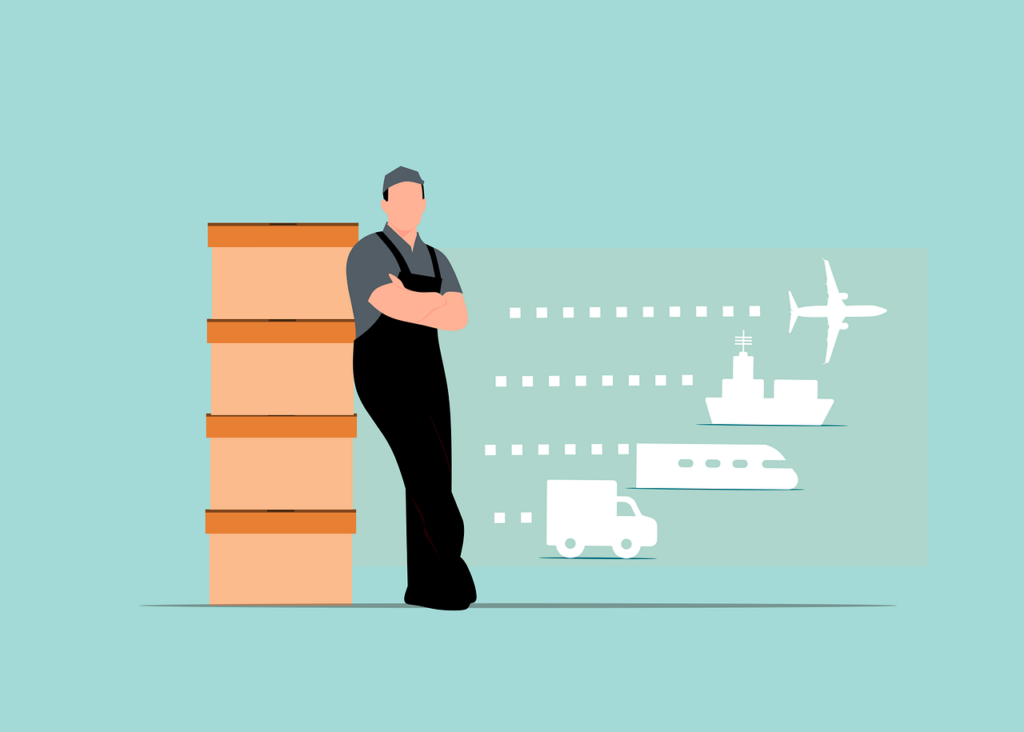Walmart’s Supply Chain Revamp, iPhone’s Checkout Revolution and More News
December is finally here, and we’re starting the month off with a fresh batch of eCommerce news. Last week we surprised you with Amazon and Meta’s collaboration, and this week we have Walmart reshaping the eCommerce supply chain landscape. Find out how in today’s article.
Today’s news is 1595 words.
Walmart’s Supply Chain Revamp
Walmart is revolutionizing its supply chain operations by teaming up with retail tech innovator Bamboo Rose. They’re on a mission to launch a cutting-edge enterprise sourcing platform. This game-changer should simplify interactions between Walmart’s buyers, product development teams, and their vast network of suppliers.
Their goal is to enhance visibility on costs and volumes, smoother access to global markets, and reduce waste.

The scope of this technological leap is vast, encompassing all Walmart and Sam’s Club sectors. Daniel Berg, Walmart’s VP of Product Global Sourcing, envisions this platform as a key to unlocking efficiency.
It’s not just about easier sourcing; it’s about connecting with suppliers at different stages, broadening global offerings, and making more informed decisions. Bamboo Rose, with its Boston roots and a client list that includes heavyweights like Loblaws and ShopRite, brings its A-game to this partnership.
Walmart’s supply chain reinvention extends beyond this platform. Earlier this year, they announced a shift towards an omnichannel network, blending in-store and online shopping seamlessly. Part of this strategy involves a surge in automation and state-of-the-art fulfillment centers, geared for rapid online order processing.
By fiscal year 2026, the vision is to have a majority of Walmart stores and fulfillment center volumes powered by automation.
What does it mean for eCommerce sellers?
Walmart’s overhaul of its supply chain with a new sourcing platform and increased automation is a game-changer for eCommerce sellers. This move sets a higher standard for efficiency and supplier relations, prompting sellers to consider similar technological advancements to stay competitive.
It also signals a shift towards more automated operations, pushing eCommerce businesses to adapt in order to meet rising customer expectations for speedy and efficient service.
Furthermore, Walmart’s global expansion could offer opportunities for eCommerce sellers to diversify their product offerings and explore new markets.
MORE: eCommerce supply chain management
Big Retailer News
iPhone’s Checkout Revolution
Square has introduced ‘Tap to Pay on iPhone’ across its iOS applications, enabling retailers to process contactless payments right from their iPhones, eliminating the need for additional hardware and without incurring extra fees.
Customers can pay by simply tapping their contactless cards or digital wallets like Apple Pay against the merchant’s iPhone, which also facilitates PIN entry with accessibility features. This system maintains privacy and security, as payment details are not stored on the device or Apple servers.
Business owners, such as Sam Corbin of 400 Degrees Pizzeria in the UK, have praised the service for its convenience. The ability to process orders and payments on a single device familiar to staff speeds up service and enhances customer satisfaction.
Samina Hussain-Letch of Square UK highlights that Tap to Pay on iPhone levels the playing field for businesses, offering an efficient tech solution in a competitive landscape. It simplifies the setup for new businesses and provides existing sellers with a quick way to process transactions, fostering new sales methods with just an iPhone.
What does it mean for eCommerce sellers?
This feature allows for contactless payment directly through an iPhone, meaning sellers can conduct transactions anywhere without needing additional hardware.
This simplifies the sales process, particularly for small businesses and individual sellers who might not have the resources for extensive payment systems. It also opens up new possibilities for mobile and pop-up shops, enabling sellers to accept payments on-the-go easily.
MORE: How much does eBay take from a sale
Henry Schein Cyber Attack
Henry Schein Inc., an important dental and medical supply distributor, faced a turbulent Thanksgiving week, grappling with the aftermath of a significant cyberattack.
On October 14, the company encountered a nightmare scenario — a major hack that crippled its core distribution and eCommerce operations. Despite boasting a hefty $12.6 billion in 2022 sales, this breach sent shockwaves through their digital commerce, which forms the lion’s share — about 75% — of their sales.
The company’s CEO Stanley Bergman revealed in a November 12 earnings call that their systems were still staggering back to life. The struggle continued well into late November, with the company disclosing yet another setback in their eCommerce systems, this time directly tied to the data breach’s lingering effects.
Although the company doesn’t want to reveal too much, a publication in Security Week suggests that the perpetrator is the notorious ransomware group Alphv and BlackCat, which attacked after a failed ransom negotiation.
This digital upheaval not only disrupted Henry Schein’s sales processes but also forced a delay in their third-quarter earnings report. Looking ahead, the company is preparing to file an insurance claim in 2024 over this cyber debacle. The incident is a stark reminder of the ever-looming cyber threats in today’s digital-first business world.
What does it mean for eCommerce sellers?
The data breach at Henry Schein Inc. serves as a critical warning for eCommerce sellers about the vulnerability of digital platforms to cyberattacks. This incident highlights the importance of having tight cybersecurity measures, as significant disruptions can severely impact sales, particularly for businesses heavily reliant on digital commerce.
Additionally, the breach stresses the importance of having insurance coverage for cyber incidents and the necessity of staying vigilant against evolving cyber threats to protect business operations, customer data, and overall reputation in the digital marketplace.
MORE: Generative AI in detail
Also in the News
- Palestinian’s struggle to access YouTube, Amazon and PayPal. Business Today.
- Amazon’s chatbox for businesses. Omni Talk.
International Retailer News
China’s Travel Renaissance
In the wake of a pivotal meeting between Presidents Joe Biden and Xi Jinping, China’s travel industry is buzzing with excitement, ready to roll out the red carpet for international tourists.
Spearheading this wave of enthusiasm is Trip.com Group, China’s leading online travel agency, which is diving headfirst into a three-year plan to revamp its inbound travel offerings.
This grand plan includes innovative partnerships and dynamic marketing strategies, such as the “Nihao China” campaign, designed to put China’s travel destinations on the global map.
The recent thaw in U.S.-China relations, marked by agreements to boost tourism and increase flight frequencies, has injected a dose of optimism into China’s tourism sector. This positive trend is further bolstered by Australian Prime Minister Anthony Albanese’s visit, signaling a warming of ties with a major trading partner.
The resurgence of foreign tourism is a lifeline for China’s economy, which has had a sharp decline in visitors due to stringent COVID-19 lockdowns and fraying international ties. Economic experts from China International Capital Corp are already forecasting a noticeable uplift in China’s exports and retail sales thanks to the anticipated rebound in inbound tourism.
The government is pulling out all the stops, easing visa restrictions and streamlining entry processes to make China more accessible to international travelers.
The result? A surge in flight bookings from countries like South Korea, the U.S., and Japan. This resurgence, combined with enticing tour packages and supportive government policies, should make a significant mark on China’s GDP, offering a glimmer of hope amid broader economic challenges.
What does it mean for eCommerce sellers?
This uptick in international visitors offers a broader customer base and increased demand for diverse products. Sellers will need to adapt their platforms for a global audience, considering language and cultural differences, and enhance logistics for efficient deliveries within China.
Additionally, this presents opportunities for strategic partnerships with travel agencies and the potential for targeted promotions aligned with travel trends.
MORE: Online Marketplaces in Southeast Asia
Europe’s 2030 Vision for a Sustainable Future
The European Parliament has taken a bold step towards sustainability by revising the Packaging and Waste Directive. It has set a groundbreaking goal: by 2030, every piece of packaging must be either recyclable or reusable.
This ambitious initiative, however, has sparked some debate due to the absence of consistent logistics standards throughout the EU.
The goal set for 2030 is ambitious – aiming for 10% of all packages to operate in a “closed system,” which mandates their reuse within local areas. This requires multiple use or recycled packaging, and necessitates that consumers return the packaging, regardless of whether they keep the products inside.
However, this forward-thinking strategy brings its own set of challenges.
The biggest one? The necessity of reverse logistics to send empty boxes back from customers to companies, potentially increasing carbon emissions.
To circumvent these issues, two innovative solutions are on the table.
The first is to create localized reusable areas, reducing the distance for reverse logistics and establishing convenient ‘return spots’ for customers to drop off their reusable packaging.
The second is a potential partnership with shipping companies, aiming to ensure that the transportation of reusable packages is exclusively carried out by electric vehicles or other zero-emission logistics options. This twin-track approach could be a game-changer for bringing together environmental consciousness and practical logistics.
What does it mean for eCommerce sellers?
The European Parliament’s directive for all packaging to be reusable or recyclable by 2030 requires eCommerce sellers to embrace sustainable packaging, aligning with growing consumer demand for environmental responsibility.
Sellers must also comply with reusable packaging quotas and engage customers in the recycling process, potentially enhancing brand reputation. The directive presents a challenge but also an opportunity for differentiation in an increasingly eco-conscious market.
Also in the News
- Decathlon’s expansion. Shop Eat Surf.
- Amazon’s Black Friday strikes. Fashion United.
Webinars
For everyone
Various dates: Amazon advertising’s global webinar program continues with 20+ webinars scheduled, covering Amazon Prime Day preparation, sponsored products, sponsored brands, reporting, optimization, and other tips. Learn more: Amazon.
For US sellers
December 6: Digital Marketing Panel. Learn more: Tinuiti.
For UK sellers
Various dates: Amazon advertising’s global webinar program continues with 20+ webinars scheduled, covering Amazon Prime Day preparation, sponsored products, sponsored brands, reporting, optimization, and other tips. Learn more: Amazon.

Leave a Reply